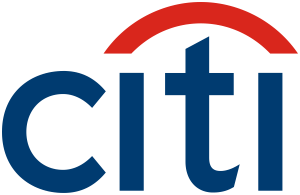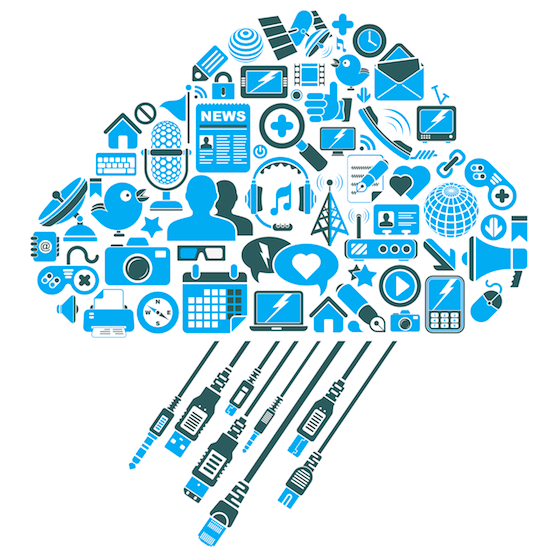LinkedIn Report: 4 Trends Transforming The Workplace in 2019
LinkedIn, the 600 million users social network has released its 2019 Global Talent Trends Report. The report highlights four trends transforming the workplace in 2019.
The researchers have surveyed over 5000 talent professionals in 35 countries interviewing company leaders, speaking with experts, and observing activity on the LinkedIn platform.
Here are 4 trends which are set to transform and shape the workplace in 2019:
- Soft skills;
- Work flexibility;
- Anti-harassment;
- Pay transparency.
1. Soft Skills
A.I. may be able to write news articles and making movie trailers, but they cannot display soft skills.
Creativity, persuasion, collaboration, adaptability and time management are valuable soft skills employers actively look for when searching for new hires.
80% of surveyed employers say soft skills are increasingly important to company success. The challenge that companies are struggling to overcome is the process by which to identify the aforementioned soft-skills. According to this report, 57% of employers struggle to assess soft skills accurately.
LinkedIn: 6 tips to help your company assess your candidates’ soft skills
1.Determine the soft skills valued most at your company by taking the following steps:
- interview your company’s leaders;
- identify the skills shared by your top performers;
- consider the skills your company needs to take on future challenges.
2. Identify and define the skills needed for a given job.
3. Consider online tools to prescreen candidates – these tools assess their soft skills systematically and with less bias (ideally).
4. Be mindful that bias can creep in.
5. Standardize your interview questions.
6. Ask problem-solving questions to see soft skills in action.
A case study on hiring for soft skills and hard skills

Citi, the Wall Street firm is not hiring for technical skills alone.
The company uses problem-solving case studies and group exercises to showcase candidates’ collaboration, communication, and leadership skills.

2. Work Flexibility
Between 2013 and 2017 candidates’ request for flexible workplaces has increased from 25% to 31%.
Since 2016 the number of job posts on LinkedIn which mention flexibility rose to over 78%.
The ability to work from any place outside the office has been driven by technology and required by an increasing number of employees who are looking to improve their work-balance life and be more involved with their family.
Here are the top benefits of work flexibility as mentioned by talent professionals:
- Improves employee work-life balance – 77%;
- Encourages retention – 54%;
- Attracts candidates – 51%;
- Increases productivity – 42%;
- Expands available talent pool – 38%.
Women candidates are more inclined to look for flexibility when considering a job offer.
The LinkedIn report found that 36% of women and 29% of men say flexible work arrangements are very important when considering a job.
PwC has identified five megatrends which will influence the world and shape the business environment of 2019.
One of these trends is the demographic and social change that is driven by the ageing population which is the fastest growing segment today. The ageing population brings disruption to the traditional life cycle of education, work and employment and increased costs on healthcare.
The solution to this situation lies in the business environment.
To succeed and thrive, businesses need to harness the power of older workers and women. Businesses catering to women’s needs will see increased productivity and reduced turnover.
Discover 4 flexible work strategies in our article:
Employees Stress – Causes, Business Costs and What To Do To Prevent It
A flexible workplace is also known to bring difficulties in collaboration and bonding. Have no fear, technology comes to the rescue! There are many tech solutions to overcome remote work challenges like instant messaging platforms, collaboration tools, audio and video conferencing etc.
LinkedIn: 6 steps to building a flexible work culture
- Know what types of flexibility your employees want;
- Optimize your office space for a semi-remote workforce;
- Help employees connect through technology;
- Promote your flexibility policy in job descriptions, candidate interviews, and employee meetings;
- Train leaders to manage flexible workers;
- Tailor your flexibility policies to fit local cultural contexts, needs, and goals.
A case study in work flexibility

Nearly 60% of Dell employees work flexibly. Dell’s flexible program has saved the tech giant an average of $12 million annually since 2014 due to reduced office space requirements.

3. Anti-Harassment
The #metoo movement spread like wildfire across the globe in 2017. The first spark was ignited by the high-profile harassment cases in the US entertainment industry. Over a short period of time, harassment cases voiced by women encompassed the business environment across multiple industries.
One may believe that companies didn’t have anti-harassment policies before the #metoo movement. They had only they didn’t prevent unacceptable behaviours from happening; the company culture was such that harassment and assault cases went unreported to management. Harassment victims didn’t believe they would be heard or that management would take any actions towards their assailants.
LinkedIn found that workplace harassment content shared on its platform increased by 71% year on year.
Employers are seeing anti-harassment as a business necessity, not just a legal and moral one. Hostile workplaces hurt the bottom line through lost productivity and turnover, while respectful ones attract talent and improve engagement.LinkedIn, The 2019 Global Talent Trends Report
75% of the talent professionals surveyed by LinkedIn said they had noticed the following behavioural changes among employees over the last two years:
- Speaking up more when uncomfortable;
- Discussing social issues more openly;
- Calling out bad behaviour more;
- Telling fewer insensitive jokes;
- Willing to listen more.
Here are the most effective anti-harassment tactics as mentioned by the surveyed professionals:
- Promote ways to safely report;
- Establish a zero-tolerance policy;
- Add more ways to safely report;
- Hold training sessions;
- Increase gender diversity of leadership;
- Add or improve policies.
LinkedIn: 4 steps to help combat harassment
- First, understand where you are before you can see what needs to change: review your existing policy, understand what your employees want, rethink well-intentioned practices that can backfire, get buy-in from the top.
- Give your policy a refresh: tell people exactly how you handle harassment claims, give employees multiple ways to report, define good behaviour, too, adapt your policy to local needs;
- Train and communicate: focus on the grey areas, make it interactive and personal, be inclusive of all victims, complement customized training with external resources, empower employees to step in when they witness an offence, not just when they’re a target.
- Respond and follow up: help victims feel safe from the start, tailor the response to the severity of the offence, respond to inappropriate behaviour publicly and with real consequences, reach out to victims even after your legal obligation is fulfilled.
A case study on anti-harassment
Last year 20.000 Google employees left their offices in New York City, Dublin, Berlin, Singapore and other cities around the world to protest against the company’s handling of sexual misconduct and inequality. Google walkouts forced the big company to review its harassment and transparency policies.
In an email sent to employees, Google CEO Sundar Pichai acknowledged previous shortcomings and laid out a plan to make changes:
We recognize that we have not always gotten everything right in the past and we are sincerely sorry for that. It’s clear we need to make some changes.
Going forward, we will provide more transparency on how we handle concerns. We’ll give better support and care to the people who raise them. And we will double down on our commitment to be a representative, equitable, and respectful workplace.Sundar Pichai
4. Pay Transparency
For years, employers refrained from disclosing too much information about employee salaries. They feared a transparent process would cause wage disputes, limit their ability to negotiate, and encourage competitors to poach talent. Salaries were kept a secret under the thick blanket of confidentiality.
The problem is when people don’t have enough information, they tend to fill in the blanks with negative assumptions.
A 2017 report conducted by PayScale showed that 61% of surveyed employees believed they were underpaid compared to other colleagues.
If employers are looking to attract the best and the brightest, they should include pay transparency in their hiring strategies.
Searching for conversations focused on pay transparency, LinkedIn found that the content shared by its users on this particular topic has increased by 136% since 2014.
But not all employers are ready to shift gears so quickly. As reported by talent professionals, 27% of companies share salary ranges, 22% don’t share but are likely to start and 51% don’t share and are unlikely to start.
Benefits of sharing salary ranges as highlighted by LinkedIn in its report:
- Streamlines negotiation;
- Ensures fair pay;
- Filters out those who’d decline;
- Allows interview to focus on other things.
LinkedIn: 7 steps to establish pay transparency
- Conduct an internal audit to see how your pay compares to competitors and whether you have any major pay gaps across gender, race, and those in similar roles;
- Decide how transparent you want to be;
- Solicit employee input;
- Develop clear compensation criteria;
- Train managers to discuss pay appropriately;
- Take it one step at a time;
- Communicate clearly as you roll out the policy.
A case study on pay transparency

Buffer began sharing salaries publicly online in 2013. The company uses a salary formula which meets the transparency criteria for each of its employees. The formula determines every employee’s pay based on their experience, local cost-of-living, and the market rate of the role. Buffer employees are happy with the company’s pay transparency strategy because it ensures they receive equal pay for equal work. They also feel valued and respected when they know they are being paid fairly.
Join the Conversation
We’d love to hear what you have to say.
Get in touch with us on Facebook Group and Twitter.
10 Skills one needs in strategic thinking
- Think critically
“Instead of jumping directly to decisions or solutions for problems, the critical thinking helps you to make decisions through objective evaluation and analysis of problems and ideas. This can be achieved through a thinking methodology that goes through three phases; observing the current situation, ask questions to clearly define the problem, and find solutions based on the answers to the questions. This thinking methodology helps to build a coherent strategic thinking approach by addressing the different aspects of the problem through addressing the situation from different perspectives,” writes Designorate.
2. Being analytical
Always questioning and thinking in-depth helps you create the best strategy for the brand, finding the best insights possible and knowing your target better. Moreover, the people working in strategic planning need to be able to analyze and evaluate a company’s business plan. They have to be skilled in market analysis, feasibility analysis, and more. Only through an analytical eye can strategic planners decide what steps need to be taken by a company.
3. Attention to details & 4. Good observation

These two skills go hand-in-hand. To be able to make a good assessment of the situation and analyse the facts,one needs to be able to pay really good attention to details and,therefore, be a good observer. Knowing what happens on the market with other brands,local and international, but also what the competition you aspire at does,it essential in your brand positioning and finding your perfect niche and communication path.
It’s important to know the big picture but, at the same time, to be able and find what differentiates you and makes your brand unique.
5. Being open to suggestions and discussions
Nobody on this earth is the holder of the forever and perfect truth, all the time. Sometimes, being to close to a certain situation or business can make one be too subjective and not see or not wanting to see some important aspects can be essential to the business’ well-being. One needs a broader understanding of the situation from different perspectives. This involves being open-minded and willing to listen to other opinions, even if they don’t share the same ideas as you. Therefore, the success can be reached by opening the dialog between all the stakeholders to share their ideas about the project during the meetings.
6. Decision making

Being able to make the final decision, especially when it’s a hard one, it’s essential in a brand/business’ life. The right person knows when to draw the line and decide.
7. Flexibility
The people having this skill recognize the opportunity to revise their plans as needed. They have an inner ability to be proactive and anticipate change, rather than being reactive to changes after they occur. They are not afraid to take chances and work over-time,when needed. Instead of being stuck in an idea or strategy that is simply not working or follow the plan as established without looking around, they know how to seize the opportunity.
8. Being a motivational factor for the team
9. Being perceptive
“Great strategic thinkers will listen, hear and understand what is said and will read and observe whatever they can so that they will have very helpful and strategic information to guide them. Strategic thinkers often have those \”Ah Ha\” experiences while on vacation, walking, sitting and relaxing or during many other activities because they see or hear something that resonates and because they are so aware and perceptive,” wrote Robert Bradford for cssp.com.
10. Having vision
One gets nowhere without the power to see ahead,to have a vision for the brand/ the business/ the company.
Don’t be afraid of the cloud, most of your data is already out there
Afraid of storing your data on the cloud? Don’t. Just think at the fact that any email service you are using (Gmail, Yahoo, Hotmail etc.) is already using the cloud, so your data is backed-up up there. None of those emails you send and receive are actually taking up space on your local hard drive, but they are stored on the email providers’ servers: this is a form of cloud computing.
Actually, cloud storage means minimal downtime and it significantly reduces the possibility of losing data, because rather than storing it in one physical location, information is placed in several servers, in multiple locations. So if one server goes down, the data doesn’t disappear. Cloud storage is convenient, and with the right precautions, it’s about as secure as keeping the data on-site at all times.
According to cloud-lounge.org, many businesses large and small use cloud computing today either directly (e.g. Google or Amazon) or indirectly (e.g. Twitter) instead of traditional on-site alternatives. And there are a number of reasons why cloud computing is so widely used among businesses today: Reduction of costs (unlike on-site hosting the price of deploying applications in the cloud can be less due to lower hardware costs from more effective use of physical resources), universal access (remotely located employees can access applications and work via the internet), choice of applications (flexibility for cloud users to experiment and choose the best option for their needs), potential to be greener and more economical (the average amount of energy needed for a computational action carried out in the cloud is far less than the average amount for an on-site deployment), flexibility (allows users to switch applications easily and rapidly, using the one that suits their needs best).

Moreover, according to wired.com, the cloud offers better insight, helps collaboration between the members of the teams, drives better engagement (as cloud is often seen as the most effective means of forging a tighter link with the customer), its benefits are measurable and pay for themselves.
But, if after all of these you are still afraid of using it, remember that many cloud services offer additional security options on top of the basic packet and you have at your disposal several measures you can take in order to protect your data. Tim Maliyil, CEO and data-security architect for Las Vegas-based AlertBoot, explained some of them for entrepreneur.com:
- Encrypt everything. Any cloud service a startup uses should implement encryption on the server side. Even if the cloud infrastructure were to be compromised, a hacker would only be able to access encrypted gibberish and no data would be stolen.
- Have a strong password. While the death of the password as a security linchpin is long overdue, it’s still the easiest point of access for users and hackers. Be sure your passwords are at least 15 characters long and include numbers, letters and special characters if possible.
- Start early. The reason major chains such as Home Depot and Target tend to be susceptible to security breaches isn’t simply because they’re high-profile organizations. Larger, more complex companies have a harder time implementing comprehensive security solutions than do smaller, more nimble companies.
Put security protocols in place while the infrastructure is still manageable so security can scale with the company instead of playing catch-up. Additionally, if the company targets regulated industries such as health care, proof of meeting data-security-compliance requirements will be needed for conducting business.
Data breaches don’t so much reflect an inherent insecurity in cloud services as they do a problem with how the available measures are implemented. Cloud services have allowed startups to thrive and scale at a fraction of the cost of companies running their own server farms. Use cloud services to build end-to-end security so as to get back to focusing on the important things: the company’s products and customers.
Part of those piece of advice can be found also on Drew Hendricks of Inc.com’s list, from which we would also mention the following:
- Backing up sensitive files. While file sharing and syncing are effective ways to back up documents, they should not replace the use of external devices. By backing up files virtually and physically, you can all but guarantee your firm will have access to its data even in the event of system crashes or attacks.
- Separating personal from corporate data. Whether your business features a “Bring Your Own Device” (BYOD) culture or not, you need to communicate clearly with employees about what information can and cannot be stored on personal devices, as well as what encryption methods are required.
- Keep sensitive materials out of the cloud. Until cloud providers can offer comparable levels of security to what is available on an internal business server, they may not be worth the risk for some data.
How will the house of 2025 look like?
The word of the future is smart. Even in the housing and design department. And as the technology is evolving at a huge rate, we wonder how it will look like in the future.
If the third industrial revolution was about using electronics and information technology to change economic systems and the way we live, the fourth will be characterized by disruptions stemming from a merger of the digital and physical worlds.
According to Yoshiaki Fujimori, President & CEO of the LIXIL Group Corporation for weforum.org, what we are seeing now with the emergence of the fourth industrial revolution is the development of cognitive architecture, which enables our living spaces to be tailored for personal and family preferences. This is set to have a profound effect on our quality of life.
“The home will become a natural, intuitive, extension of you. Rather than the occupant adapting to the home, we’ve entered an exciting new phase where the home works for those who live inside it. Development of AI, robotics and other advanced technologies for applications within the living space has been underway for some time, but are gaining increased attention,” said Yoshiaki.
Kevin Foreman, quoted by wired.com, believes that homes will soon become intelligent enough to distinguish between family members and guests within physical spaces and adapt to individual needs based on biometrics like fingerprints, body temperatures and even the rhythm of our own heartbeats. Therefore, in the very near future as you walk through your home, a small device worn around the wrist will authenticate your identity by pairing itself to your specific heartbeat, allowing your home to automatically adjust the lighting, room temperature and play custom music based on personalized preferences and pre-configured profiles.
Meanwhile, companies such as Nest are creating connected products that recognize homeowners’ preferences and adjust settings like temperature automatically or via an app.
In the same way that primary energy use in the home shifted from lighting to more complex devices and appliances, Internet traffic is following a similar pattern. Professor Klaus Schwab’s report on the Fourth Industrial Revolution predicts that the tipping point will be when over 50% of internet traffic delivered to homes is for appliances and devices as opposed to entertainment and communication, and that we can expect this tipping point to have occurred by 2025.
Here are some of the aspects that will make our lives easier:
Robots everywhere
According to the specialists, home appliances will become more self-aware, an example being the iRobot Roomba 780 which can be set to vacuum on a schedule, find its way around furniture, and even stay within a specific zone. In 15 years, devices for cleaning windows, sweeping the floor, and even making minor repairs will do their work inconspicuously. Yet, even the predictive technology in your home – using less energy during one week because the weather forecast says you will need more heat for an upcoming cold spell – has robotic intelligence.
Moreover, the journalists from http://www.plymouthherald.co.uk believe that in 15 years the companion robots will be available as part of team of collaborating robots. They will be able to monitor the wellbeing of their elderly charges, remind them to take their medicines, call relatives or cariers in an emergency, and perform simple tasks. Their owners will be able to give them shopping lists – by voice or by computer tablet – which the companions will convey via a “warden” robot who will pass it on to the outside robot, which will do the shopping. Your children might also benefit by having a “teacher” robot to help with the homework.
Solar photovoltaics on every roof
Over 15 per cent of houses in Australia already have rooftop solar installed, and forecasts show by the 2020s, solar and wind will be the cheapest way of producing electricity. Companies are already combining satellite imagery with algorithms to understand the savings you can make from your rooftop. And given the massive cost reductions of 99 per cent since 1970, and 80 per cent since 2008, it’s easy to foresee that solar photovoltaics will be ubiquitous by 2025.
Still according to plymouthherald, by 2030 the mantra will become “Energy, energy, energy”. Many new buildings will be carbon-neutral, meaning they will produce all of the energy they need without burning fossil fuels, and will even export electricity.
Merlin Hyman, chief executive of Regen SW, said: “For most of us our regular bill is the only time we think much about how we use energy in our homes. However, with the introduction of smart meters that is set to change. In the future we will be flexible to use energy when it is cheapest – for example charging electric cars overnight, or heating our water during the day. We may even export power back to the grid from batteries in the house if there is a surge of demand and a high price.”
Everyone will have to adapt to the future of energy – and that includes the suppliers. Nigel Turvey from Western Power Distribution predicts that the growth of renewable energy will really take off after 2025.
Smart appliances
In the house of tomorrow everything will be connected through technology and the new, smart appliances are a big part of it. The interaction with the user will be easy and smooth, they will increasingly be able to learn what you want and to have it on hand.

source: Emaze
The old-fashioned light switch will eventually disappear, and we will control lighting using smartphone or touchscreen panels – or even voice-activation. Smart thermostats like NEST and Hive allow you manage every minute of your home’s heating schedule from a smartphone, tablet or computer. So coming home from a holiday to a cold house will be a thing of the past.
The days of the chip-stop on the way home when you’re too tired to cook may be numbered too. Your fridge, connected to the Internet of Things, will not even need to ask you for a shopping list: it can tell when you’re running low, and place an order with the supermarket. This technology is actually here in some countries, not in the far-away future.
When it comes to novelties, ” June” is a smart oven, expected to ship this year. Its intelligent system can recognize the dish and know exactly how to cook it to perfection. June can be controlled with your iPhone or iPad, and you can monitor cooking with a live video stream.
Moreover, the appliances in one’s house will operate autonomously and interact with each other and even today one still has to load the washing machine, by 2030 one will just walk away, leaving the machine to decide how dirty the clothes are, and when to switch on to take advantage of the cheapest and most plentiful electricity.
Smart living & content
Virtual reality can turn couch potatoes into globetrotters. And they won’t even have to get up to hunt for a DVD: centralized streaming will give instant access to entertainment. The TV set will no longer dominate the living room: ultra-thin OLED displays will allow us to stick our TV screen to the wall, and holographics will bring characters right into the room.
The future home will be intelligent enough to predict what you want to do with content. Dell spokesperson Chad Andrews told TechRadar about a concept where media knows more about the playback device that we can even conceive today: adaptive music, movies, and photos that change shape and size (and color profiles) based on whether you are viewing them in the living room on an HDTV or on a tablet in your office. Data centers will predict the media you want to use and provide that media in the proper formats and sizes. Moreover, the number of screens in the future home will increase exponentially. To avoid overload, the visual information will integrate better into appliances, mirrors, and even the tools and household items you use. There might be flexible display on your cleaning detergent with instructions for use, or a display in the garage that reminds you about home maintenance.
Speech enabled
Whether you are a fan of Apple Siri or not, one thing is clear: speech tech has finally hit the mainstream. Your home will understand what you say. Already, Samsung and others are developing smart televisions that understand spoken commands. In the future, your home will respond to voice requests for the news, sports, and entertainment. More importantly, your home will use advanced algorithms that determine when you are speaking to the home or to your spouse – sensing a change in your tone, or interpreting a phrase that must be an instruction to change the house temperature. How about that level of smart?
Knowing you better that you know yourself
The future home will be smart enough to know what you want – sometimes even before you want it. Ford has already started experimenting with the Google prediction engine to guess where you want to go at certain times of the day. Your house will also know your preferences: when you start a movie, the lights will dim to the level you normally use. Moisture sensors in your lawn will learn how much you use a sprinkler system and adjust patterns accordingly.
The Job of the Future

The future. The perfect job. All of these terms mean different things to different people. What makes us happy may not make somebody else. Forseeing into the future and finding predictable trends is a job that requires lots of research and inspiration, but it will never be 100 percent accurate.
If for some people the perfect job might be travelling and blogging about it, for others may mean sitting in front of a desktop and writing algorithms. If for some the job of the future may be totally related to the new technologies, for others may represent going back to their roots and the nature, following the naturist trend.
For example in Singapore, according to vulcanpost.com, there are three mismatches in today’s society that negatively impacts the employability and job search process for Singaporeans: mismatch of skills, of jobs and of expectations. Due to the lack of publicly available information, job seekers sometimes have a skewed impression of what jobs are up for grabs, and where they can be found. This in turn results in a surplus of jobs in certain industries while other sectors, such as security, suffer from a crippling lack of manpower. According to the Acting Minister of Education, Ong Ye Kung, there will be a job boom in the engineering and tech sectors of more than 30, 000 positions. And that, while at the same time, there are countries where the demand for these people is huge and rising.
Moreover, we have to take in account the fact that some jobs and titles didn’t exist some years ago, leaving the possibility for the same thing to happen in the future. In other words said, nobody knows what new jobs and positions will appear in 20-30 years’ time from now.
What is important to realize is that any job you would forsee for yourself, in order to make sure you do have a future, you must poses a set of skills that will help you navigate through the tough climate and find the right spot for you, even this one may change during the years. In our opinion, those qualities would require someone to:
- Be flexible
- Stay curious
- Be creative
- Be a different type of leader
- Have great communication skills
- Try to expand your boundaries
- Experiment as much as possible
- Know Himself / Herself
- Don’t be afraid to ask
- Build networks
- Keep the ego in check
- Be present and active
- Keep an eye out for everything new


